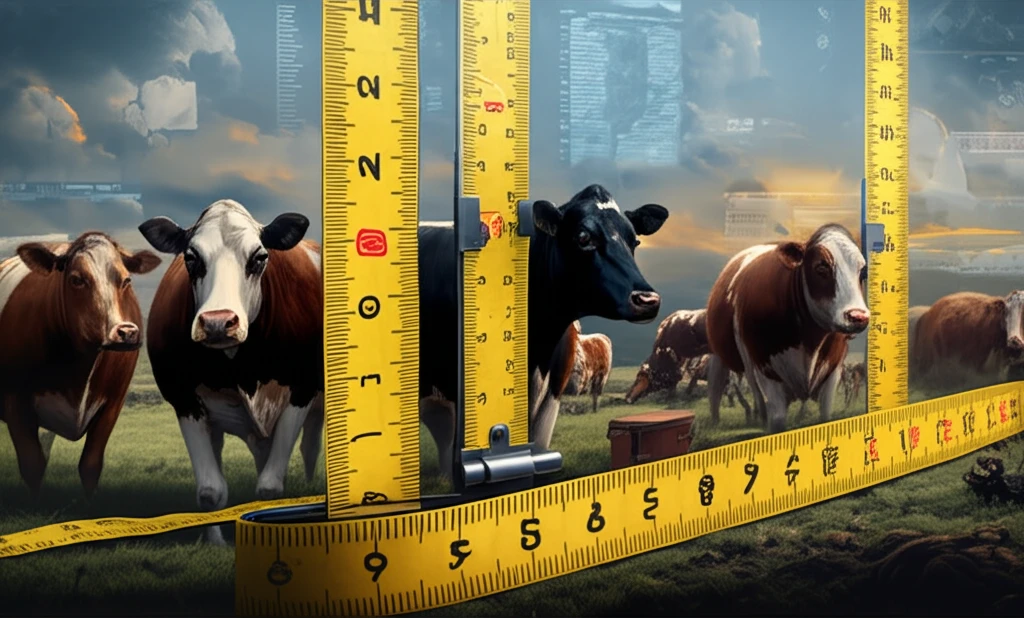
Decoding USDA Frame Scores: Are Your Cattle Really the Size You Think?
"A deep dive into the accuracy of USDA frame scoring for cattle and how it impacts final body weight predictions."
In the United States, feeder cattle are routinely assessed for frame size and muscling characteristics by trained USDA personnel. This evaluation, known as frame scoring, plays a crucial role in providing a standardized language for trade, benefiting both buyers and sellers. Frame score and muscle score serve as key indicators of genetic merit, offering a consistent basis for classifying feeder cattle.
Frame score, which categorizes cattle as small, medium, or large, is determined by estimating the anticipated final body weight (BW) of the animal at a target fat thickness. This system aims to predict the optimal harvest weight for cattle to achieve a desirable quality grade. However, the accuracy of this subjective evaluation method has been a topic of interest and scrutiny.
A recent study was conducted to compare assigned frame scores in feeder cattle to their actual final BW. By analyzing feedlot and carcass data, the study aimed to determine the accuracy and precision of frame score assignments, shedding light on potential discrepancies and areas for improvement in the grading process.
The Frame Score Reality Check: How Accurate Is the USDA System?

A comprehensive study was conducted using feedlot and carcass data from 23,057 cattle (16,700 steers and 6,357 heifers) across 16 states. These cattle were fed in 17 feedlots in southwest Iowa between 2003 and 2011. The USDA or state personnel recorded frame and muscle scores either before the cattle left their state of origin or upon arrival at the terminal feedlot.
- Large Frame Accuracy: The system accurately predicts the minimum target final BW for large frame steers and heifers.
- Medium Frame Discrepancy: The final BW of the smallest medium frame steers and heifers exceeds the target minimum final BW by 35 and 40 kg, respectively.
- Over and Under Assignment: Large frame cattle were over-assigned by graders (62% vs. 35% for steers and 54% vs. 32% for heifers), while medium and small frame cattle were under-assigned.
- BW Guideline Compliance: Only 40% of cattle assigned to small frame, 59% to medium, and 43% to large frame actually had final BW within the target guidelines for each frame score.
The Future of Frame Scoring: Adapting to Modern Cattle
The USDA frame score system, while valuable, requires continuous refinement to maintain accuracy in the face of evolving cattle genetics and management practices. Regular audits and adjustments to the assignment of frame scores can ensure that the system remains a reliable tool for the beef industry. Embracing technological advancements and incorporating data-driven insights will be crucial in optimizing the precision of frame scoring and enhancing its predictive capabilities.
